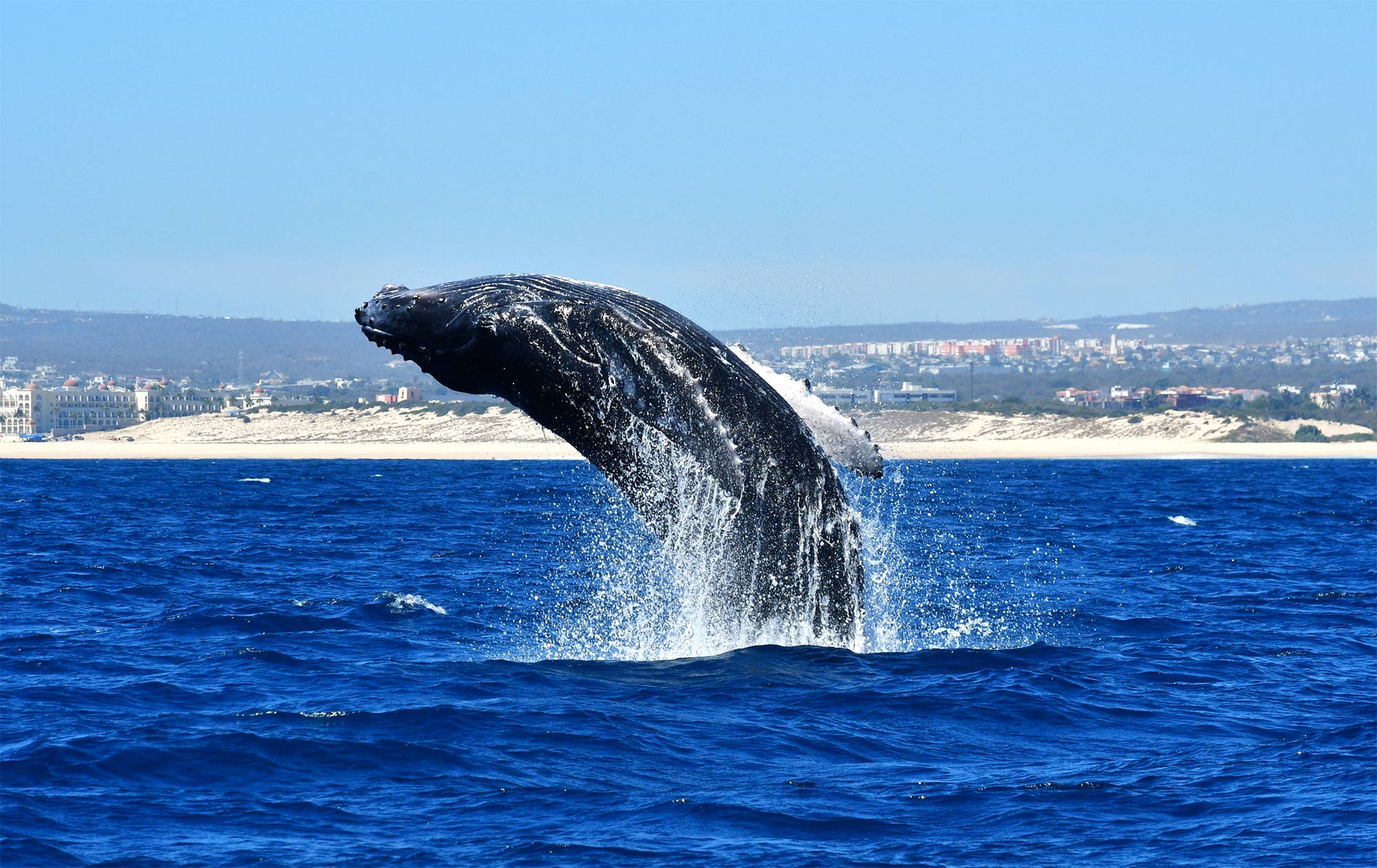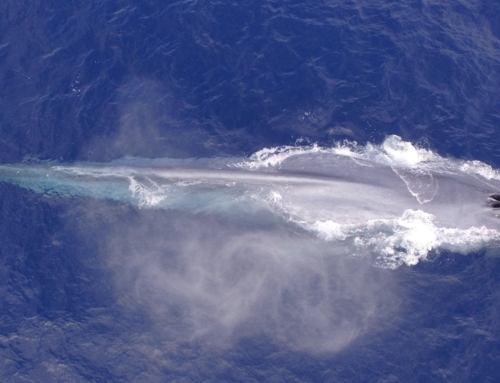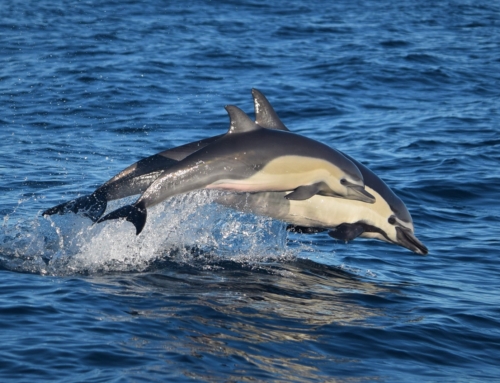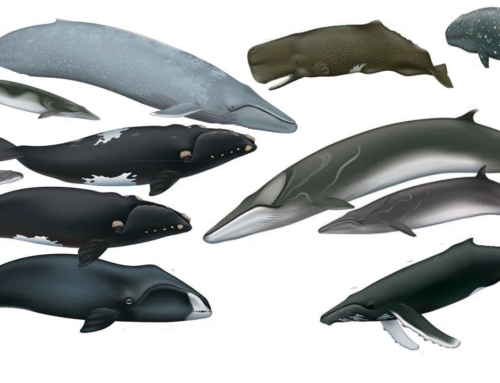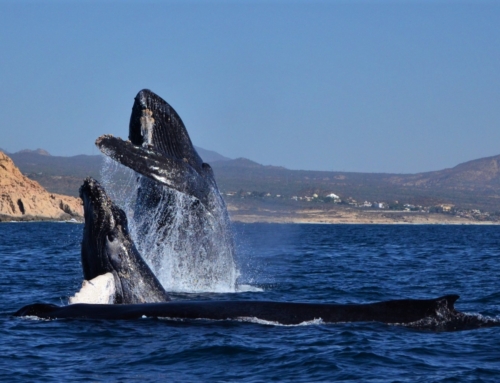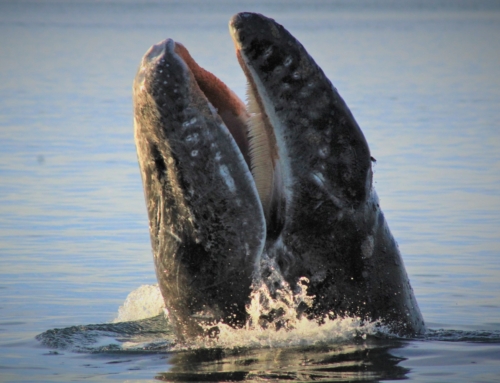It’s easy to be spellbound by whales. After all, their size, weight, brains, migration patterns, reproduction, behavior, evolutionary history and even their sounds – which we refer to as ‘songs’ – are both astounding and enigmatic. In fact, a single encounter with these magnificent animals is enough to reveal the many similarities we share with them: we both breathe air, we’re both warm-blooded, we both nurse our young, we both even have hair! This is why here at Whale Watch Cabo we love getting into a boat and heading out to find whales every day during the whale watching season in Los Cabos. This is also why the whale watching tours industry has grown dramatically in recent years, especially here in Cabo San Lucas. However, to truly appreciate whales today, it is important that we also understand a little bit about their recent history – and more importantly – their past and current plight.
Not too long ago, hopping on a boat and heading out to find whales could’ve had a drastically different meaning. If you took part in such an expedition it was possible – perhaps even likely – that you were a commercial whaler. Commercial whaling, the practice of mass hunting and killing of whales for the production of goods for human consumption, drove many populations of whales to near extinction. Some populations of humpback whales, for example, were reduced by more than 95%, according to NOAA. Others suffered even greater losses. Whalers would hunt whales, particularly baleen whales such as humpbacks, in order to obtain their meat, oil (from their blubber), and the so-called “whalebone” – whalebone is a term for the baleen plates, not made out of bone, that act as the main feeding hardware of baleen whales, analogous to teeth. The meat was used as foodstuff. The oil from the blubber was used as a fuel source. In fact, according to a New York Times article, whale oil actually lighted most of the Western world at one point! And the whalebone was used to make all sorts of items ranging from corsets to umbrellas to crinolines and many others. Ironically, many of these items are now made out of plastic, which today is one of the most immediate threats to whales and marine life.
To put it all in perspective, the whaling industry was at one point one of the largest industries in the world, it has even been likened to what the oil industry has been for the past 60 years! It’s worth mentioning that whaling had been practiced by humans for thousands of years, but it truly got out of hand right around the 18th and early-19th centuries, when improvements in technology enabled whalers to become highly efficient at killing large numbers of whales.
Long story short, whale populations were diminishing to such an extent that in 1946, a document called the International Convention for the Regulation of Whaling was signed by several countries, giving way to the creation of a body that would oversee whaling: the International Whaling Commission, or IWC for short. The goal of this commission was to essentially “provide for the proper conservation of whale stocks and thus make possible the orderly development of the whaling industry”, per the IWC website. To put it simply, this agreement sought to ensure that there were enough whales to continue whaling. However, its guidelines did little to stop the heavy decline in whale numbers and, with many whale species facing imminent extinction, the IWC organization would eventually be left with no choice but to call for a moratorium, i.e. a ban, on whaling. This ban went into effect during the 1985/1986 season.
Fast forward to today, in spite of countries like Japan, which recently pulled out of the IWC to resume commercial whaling, the international moratorium on whaling has been rather successful in allowing some whale species to begin to recover, albeit slowly. But make no mistake, whale populations today are barely a fraction of what they were before the heyday of commercial whaling, and they’re not projected to fully recover anytime soon.
Enter Whale Watching
The rise of the whale watching industry in places such as the resort town of Cabo San Lucas has allowed the general public to get up close and personal with whales, animals that for a large part of the human population still remain rather mysterious, perhaps even mythical. Whale watching is essentially, just that, whale watching. You book a tour and head out into the ocean to watch whales engaging in their natural behaviors. Ideally, you book the tour with a responsible and professional company that follows whale watching regulations.
Taking part in a whale watching tour can have a positive impact in the recovery efforts of whales by opening up different sets of the public to the lives of these mighty marine mammals in their natural habitats. However, this is why it is paramount to book tours with reputable whale watching companies that are dedicated to providing safe encounters, for both guests and whales, and that abide by the whale watching regulations recommended by government entities and backed up by research.
At Whale Watch Cabo we understand that the right experience in whale watching can lead to positive changes in behavior, for example, by educating our guests on why it’s important to reduce their use of plastics or to learn more about the impacts of climate change. The correct type of whale watching experience, paired with proficient, professional and passionate guides, can be the catalyst towards positive change that is needed to safeguard our beloved whales. This is why we dedicate ourselves to providing fun, personal, educational, and above all, safe whale watching encounters in Cabo San Lucas to all of our guests. We are committed to helping you see the whales the way we see them: as magnificent creatures that belong in our oceans as part of the Earth’s community of life. It’s not just about seeing large marine animals and then going home; to us, it’s about facilitating long-lasting connections between our guests and the whales, which we hope they will share with their friends and family and thus, lead to further protection of not just the whales, but all marine species. Ultimately, we hope it will help our guests understand how valuable and essential the whales are to our own well being and survival, and also how similar they truly are to us! In the end, a healthy population of whales will always be worth a lot more than their use as resources ever could.
At Whale Watch Cabo we are also happy to support conservation and research projects. For example, we love contributing to the HappyWhale.com citizen science project. As part of our tours, our guides already take hundreds of photos of whales every single day; so we decided to collaborate with this project in order to help researchers conduct photo-identification of whales in order to better understand, for example, their migration patterns and behaviors. In turn, this can help us conduct better whale watching tours that minimize stress to the whales and also be used to support the creation of marine protected areas. We even have an intern whose main task is to photograph whale tails and catalog all of our tail fluke photos and then upload them to the project’s website!
We understand that whale watching is only a link in a long chain that is needed to properly protect whales. However, we truly believe that helping our guests take the first step towards a deeper connection with whales is absolutely essential. Even though whaling is still virtually banned, whales now face another bevy of threats: entanglement in fishing gear, noise pollution from both increased boat traffic and ongoing oil exploration, injuries from boat strikes, stress from improper whale watching tours, unknown effects from climate change, and perhaps the biggest: the colossal stream of throwaway plastic polluting our oceans.
Whales are still very much endangered, their plight has really only shifted from direct hunting to indirect. We invite you to join us on a whale watching tour in Cabo San Lucas and not only learn about these wonderful animals, but also take the first step towards being part of the growing community of people fighting to protect whales and their environment, and ultimately, also protect ourselves.

